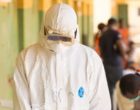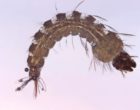
On 30 January 2020, the WHO declared the COVID-19 outbreak a Public Health Emergency of International Concern. On 11 March 2020, it officially became a pandemic. Two days later, there was a call to make “COVID-19 and coronavirus-related publications, and the available data supporting them, immediately accessible”. This led to the Public Health Emergency COVID-19 Initiative.
By now, several publishers have responded to the call. The resulting commitment to open access and reprints removed some of the barriers writers and readers faced in the past. These include at-times slow peer review and publication processes, publication costs for writers and access fees for readers. Apart from quick and free access to a lot of new information, there is the potential for a greater variety of topics and findings (e.g. including more niche topics and “negative results”). Also, there have been imbalances in the authorship of academic global health publications, with the “foreign researcher” dominating topics which mostly affect middle-income and especially low-income countries. Hopefully, this will see a change now that publication has become more open and less costly – but for how long?
On the cautious side, preprints bear an increased danger of letting poor research slip through. This is demonstrated by a recent paper on hydroxychloroquine with inconsistencies in the data the authors claimed to have used. Although retracted by now, the paper has already done considerable harm. Trials of the drug had been suspended and, though they have now been restarted, this has delayed further investigation into whether hydroxychloroquine could help in the prevention and/or treatment of COVID-19 or not.
What else has changed? Research has been hampered by lockdown restrictions, in particilar research that is not on COVID-19. Laboratory closures were common, and left especially early career researchers wondering if they still would have a career after the pandemic. Some hope now finally returns with lockdowns easing around the globe. Still, consequences will be felt for months to come if not longer.
Papers on parasites and vectors may look less shiny than those on COVID-19; nevertheless there are interesting and important publications out right now. Many of them are available free of charge but few refer to events and research taking place since the start of 2020, and it seems that those that do tend to have some link to COVID-19. So indirectly, publications on parasites and vectors also have been impacted by currently ongoing pandemic-induced changes in academic publishing. This may be good, but also requires us to read with more care.

Repurposing drugs for COVID-19
Several old drugs for other diseases – not just chloroquine and hydroxychloroquine – have been or are still being considered for the treatment of COVID-19. This includes the repurposing of drugs against Ebola, dengue fever, Lassa fever, zika, chikunganya, malaria, leishmaniasis, giardiasis, scabies and different kinds of helminths including tapeworms, trematodes, strongyloidiasis and river blindness (see also: here and here).
Unfortunately, repurposing efforts could worsen already existing shortages of e.g. antimalarial drugs due to recent COVID-19 lockdowns and increases the risk of substandard/falsified products if no additional meassures for quality assurance are taken. Reports of people in the US and Nigeria accidentally poisoning themselves by taking chloroquine formulations against COVID-19 demonstrate the need for a warning: as for now, none of the drugs under discussion seems to have proven its suitability as a COVID-19 drug.

Other outbreaks so far in 2020
Dengue fever causes about 10,000 deaths every year in over 125 countries around the globe. A quick Google search yields 14 countries with dengue outbreaks in 2020: Singapore, Thailand, Paraguay, Indonesia, Argentina, Fiji, the Marshall Islands, France, Peru, Colombia, Brazil, Nicaragua, Venezuela and Australia. In addition, I found one academic paper on a recent dengue outbreak in Brazil. It recorded a significant increase of suspected cases in comparison to last year. The current development has led to the question: “Is Dengue the new rising global health problem?” – unfortunately in a paper behind a paywall.
Do these outbreaks get the proper attention now that the world is focusing their attention on COVID-19? One paper asks whether the COVID-19 pandemic was “masking the deadlier Lassa fever epidemic in Nigeria“. Lassa fever has an annual peak from December to April. This year, more cases were reported than last year. In the DR Congo, Ebola cases have been on the rise again after the outbreak came close to an end in April. In these two countries, Lassa fever and Ebola have a case fatality ratio higher than COVID-19, still media coverage is low.

Interesting interactions
By comparing distribution maps of coronaviruses from 2003, 2017 and 2020 (the latest as of 25 March) with a distribution map of malaria from 2017, a paper points out an “inverse relationship in the overall number of cases infected with coronaviruses and Plasmodium parasite”. The paper considers two possible causes for the low number of coronavirus cases in malaria endemic regions: an evolutionary adaptation related to malaria versus the use of chloroquine in preventing and treating malaria.
Another paper noted that the spread of COVID-19 in Africa was slower than predicted. The paper generated the hypothesis that immunomodulation induced by parasites could lower the susceptibility to COVID-19. On the other hand, another paper hypotheses that co-infection with helminths could worsen the severity of COVID-19.
Correlation does not imply causation. The higher number of confirmed cases in regions where malaria is non-endemic could also be explained by the greater availability of diagnostics in resource-rich countries. Nevertheless, it makes sense to investigate the role of parasites in this.
For this purpose and in general, we need good, open and diverse research and publishing.

Comments